- Stay Connected
 Abraham Lincoln
If given the truth, the people can be depended upon to meet any national crisis...
Abraham Lincoln
If given the truth, the people can be depended upon to meet any national crisis...
 Guildford news...
for Guildford people, brought to you by Guildford reporters - Guildford's own news service
Guildford news...
for Guildford people, brought to you by Guildford reporters - Guildford's own news service
Exhibition Review: ‘Uncommon Power’ Watts Gallery
Published on: 21 Nov, 2021
Updated on: 21 Nov, 2021
By Alice Fowler
Lucy and Catherine Madox Brown were sisters and accomplished artists, born into the heart of the Pre-Raphaelite world. Daughters of the artist Ford Madox Brown, they were taught to paint by their father and produced work full of flair and interest.
Today – in common with many Victorian women artists and writers – their work is almost forgotten. Watts Gallery – Artists’ Village is attempting to rectify this oversight, with the first exhibition dedicated to the sisters’ lives, art and feminist legacies.
This is a small and wonderfully intimate exhibition. The sisters’ paintings and drawings – as well as photographs and letters – are dimly lit for conservation reasons. It’s hard not to see this shrouding of their work as a reflection of the difficulties they faced as Victorian women, making their way in an emphatically male world.
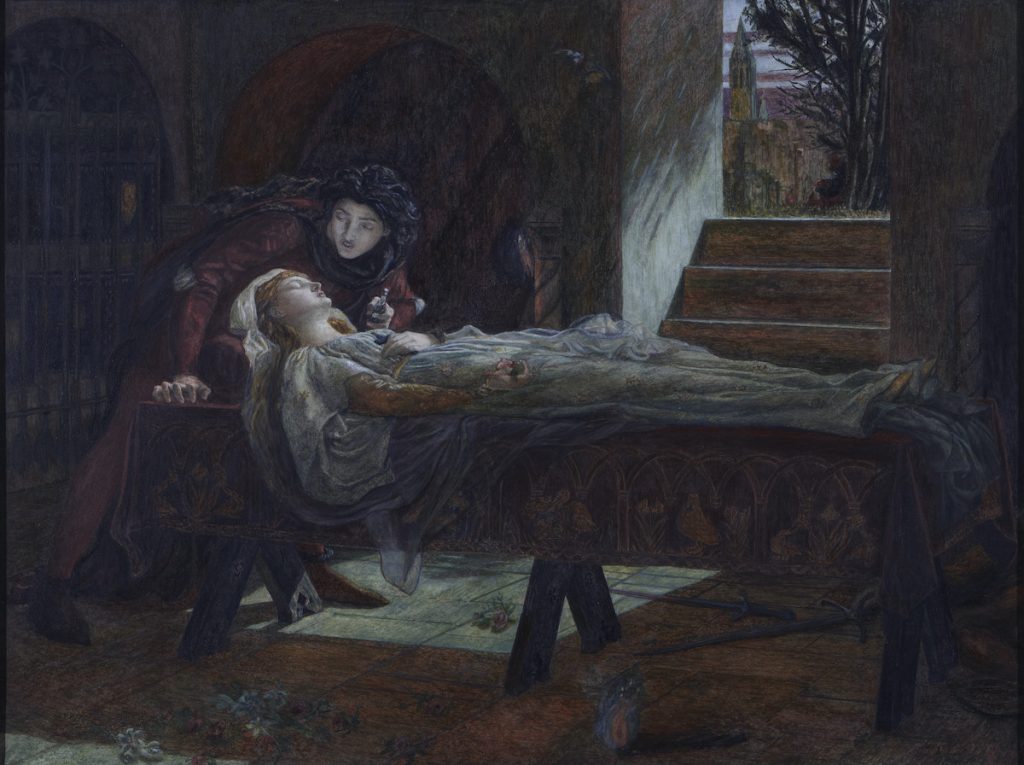
The Tomb Scene from Shakespeare’s Romeo and Juliet, celebrated as Lucy’s greatest artistic accomplishment.
Lucy (1843-1894) and Catherine (1850-1927) were half-sisters. From infancy, they sat frequently for their artist father, modelling for some of his most celebrated works including Stages of Cruelty and The Pretty Baa-Lambs.
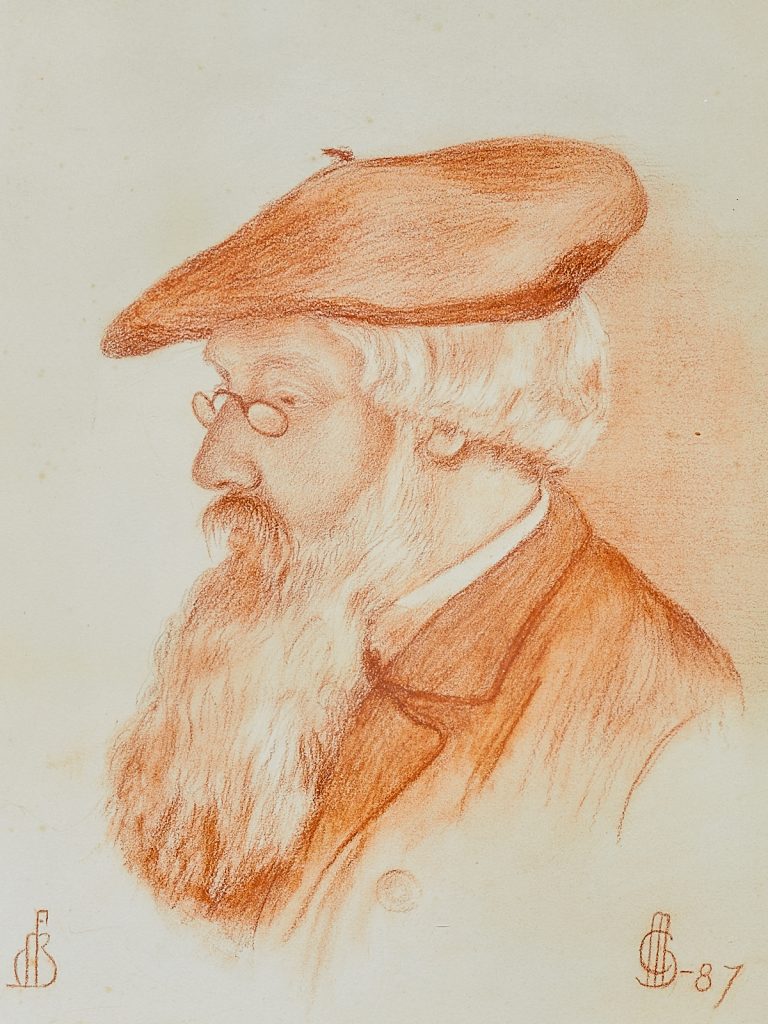
Ford Madox Brown at the Easel, 1870. Painted by his daughter Catherine in his garden at Fitzroy Square, London.
Madox Brown was keen for all his children to learn to paint, and Lucy and Catherine were trained in his studio, alongside their brother Oliver and fellow artist Marie Spartali Stillman. Madox Brown freely admitted that his use of colour ‘was greatly improved by the more opulent and refined colour-sense of his daughters’.
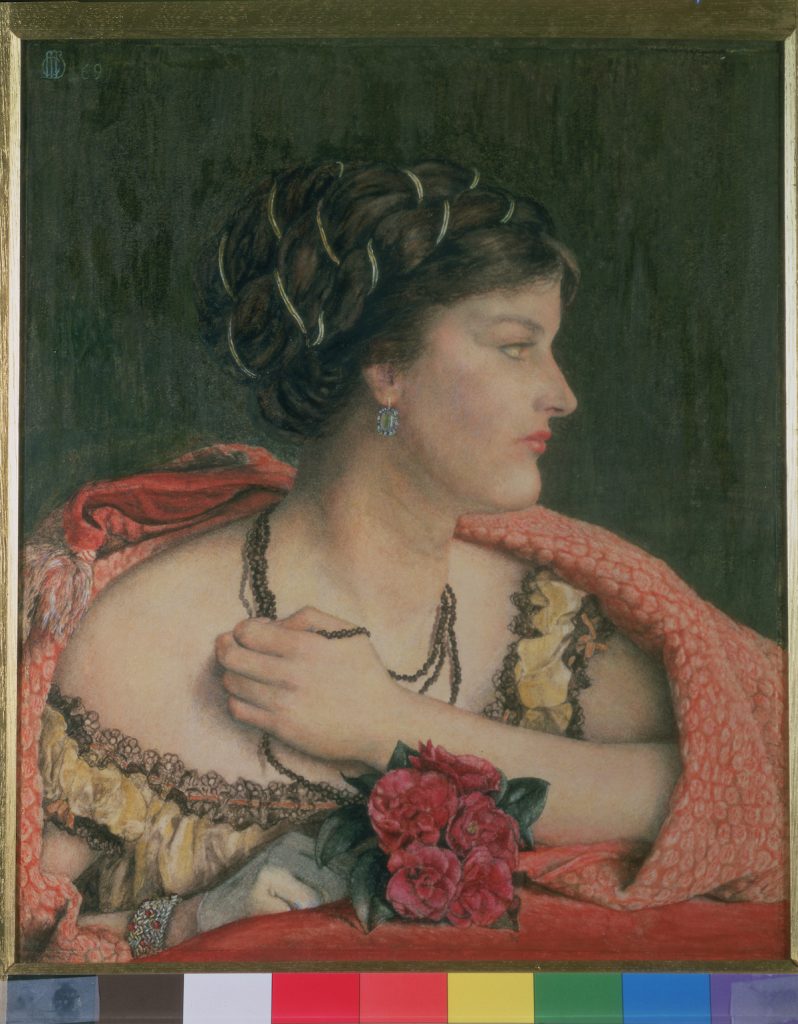
‘At the Opera’ by Catherine Hueffer (Madox Brown), painted in 1869. The portrait, most likely of her sister Lucy, was criticised for the ‘absurdly small’ head, and shoulders ‘not to be accounted for’.
Were the Madox Browns an early sisters “brand”? It’s hard to think otherwise. A contemporary female writer described them, rather bitterly, as rake thin (which made them look taller than they were), clad in hues of brick red and sage green, and talking so much it was hard to get a word in edgeways. Together they dressed in “the height of artistic and aesthetic fashion” and presented themselves “like a Burne-Jones picture”.
Both married into artistic and creative circles: Lucy to writer and critic William Michael Rossetti (brother of Pre-Raphaelite founder Dante Gabriel Rossetti), and Catherine to music writer and librettist Francis Hueffer.
Now comes the rub. For, while the sisters certainly benefited from their father’s name, which guaranteed exposure for their work, they also attracted harsh scrutiny. Several of the portraits in this exhibition were found wanting by the art critics: a head too small here, a pair of shoulders missing there. Would a male scion have been judged so sternly?
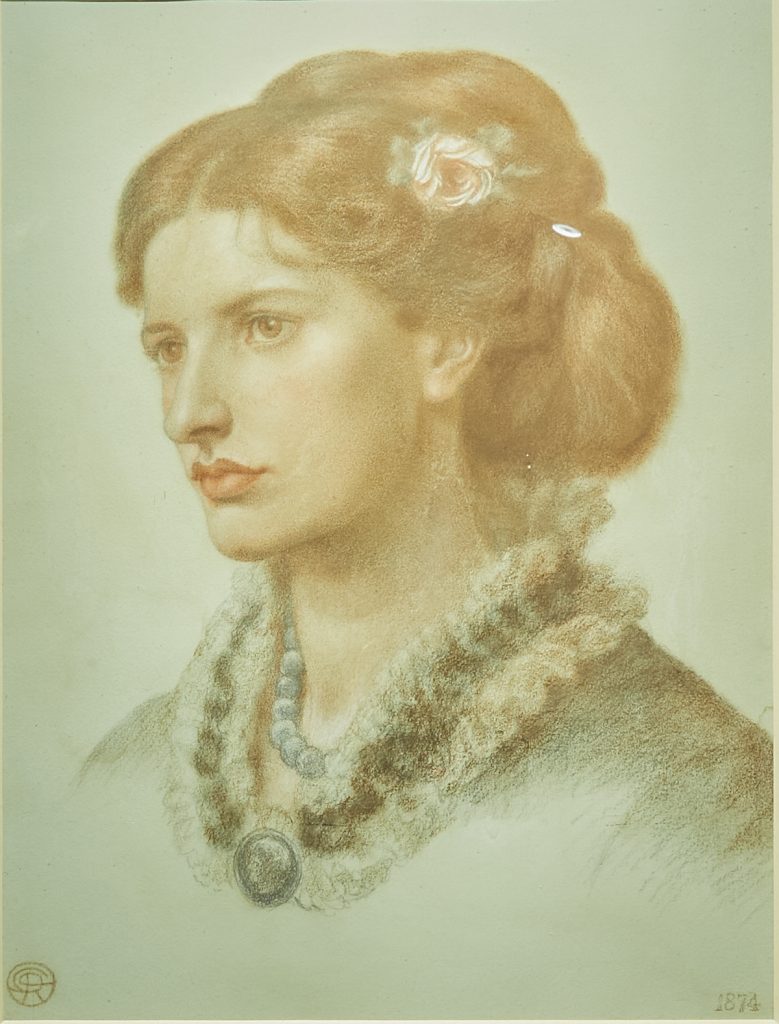
A portrait of Lucy in 1874, given as a wedding gift by her new husband’s brother, Dante Gabriel Rossetti.
Ford Madox Brown certainly believed his son, Oliver, was the inheritor of his genius, rather than his daughters. When Oliver died young, and the sisters married and took on new responsibilities, the heart seemed to go out of their work. Both stopped exhibiting. Instead, they became carers for children, parents-in-law and parents. The works they did produce were strictly for domestic consumption.
In Lucy’s relatively short life (she died aged 51) and Catherine’s longer one (she died aged 77 in 1927), the sisters achieved far more than most women of their era. Nonetheless, looking at Ford Madox Brown’s portrait of a wistful-looking Lucy holding her first born child, it’s easy to imagine she’s thinking of the career that might have been.
The exhibition “Uncommon Power”: Lucy and Catherine Madox Brown, continues at Watts Gallery – Artists’ Village in Compton until 20 February 2022.




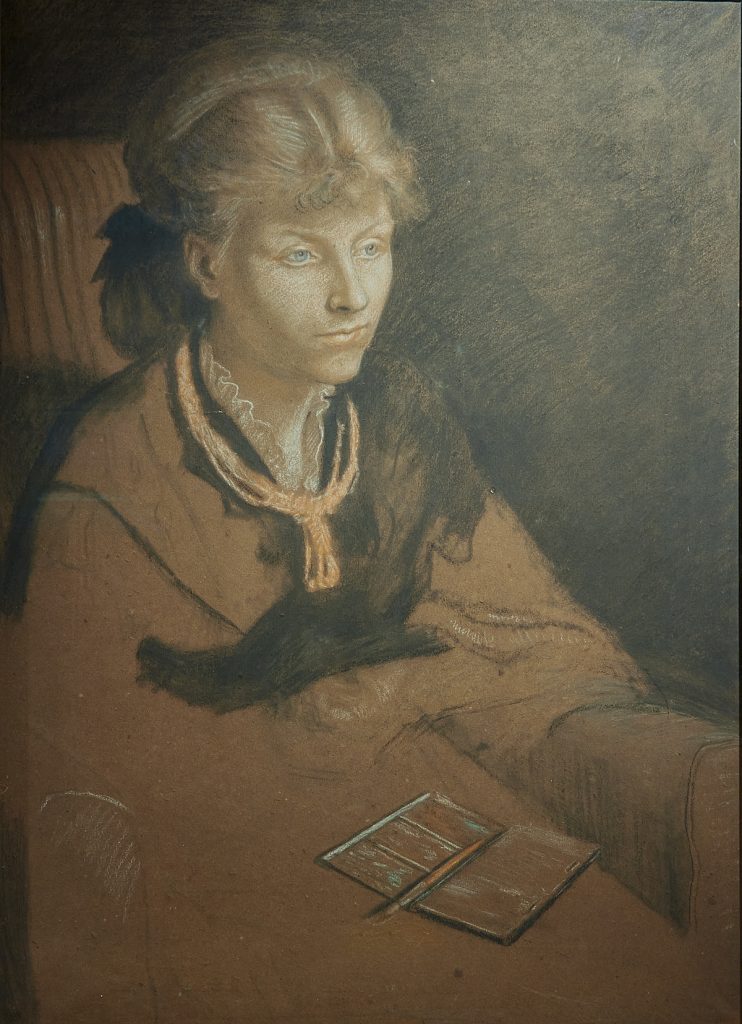













Recent Comments